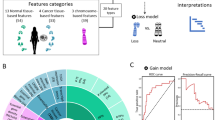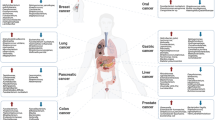Abstract
The final clinical manifestation of cancer is a result of complex series of changes in a single cell. This review summarizes some of the new concepts and hypotheses that explain the evolution of cancers. The emphasis is on cancer as a disease of the stem cells within a tissue that undergo initiation as a result of mutational insult to one or more genes that are critical for cell growth. During the second stage (promotion stage) the initiated cells acquire proliferative capacity due to epigenetic changes, i.e., altered expression of genes whose products play a central role in signal transduction. This requires continued exposure to agents and events causing such changes. This stage is, therefore, reversible and the various components of this stage are central targets for the development of mechanism based anti-cancer drugs. During the stage of progression, the neoplastic lesions acquire additional genetic alterations and become clinically manifestable malignant neoplasms. At the biochemical and molecular level, neoplastic tranformation involves aberrations in the expression and regulation of oncogenes, tumor suppression genes, transcription factors and components of the cell signal transduction cascades. The understanding of the various cellular biochemical and molecular events that metamorphose a normal cell into a cancer cell is central to the development of rational new drugs that are targeted against the various components. Such drugs in combination with the conventional chemotherapeutic agents that are currently used, provide a more effective control of cancer without the risk of toxic side effects.
Similar content being viewed by others
References
Harris CC. Chemical and physical carcinogenesis: Advances and perspectives for the 1990’s.Cancer Res (Suppl) 1991; 51: 5023–5044.
Trosko JE. Towards understanding carcinogenic hazards: A crisis in paradigms.J Am Coll Toxicol 1989; 8: 1121–1132.
Ames BN, Gold LS. Too many rodent carcinogens: mitogenesis increases mutagenesis.Science 1990; 249: 970–971.
Potter VR. Cancer as a problem in intercellular communication: regulation by growth-inhibiting factors (chalones).Progr Nucl Acid Res Mol Biol 1983; 29: 161–173.
Bishop JM. The molecular genetics of cancer.Science 1987; 235: 305–311.
Roth JA. Molecular surgery for cancer.Arch Surg 1992; 127: 1298–1302.
Carbone M, Levine AS. Oncogenes, antioncogenes, and the regulation of cell growth.Trends Endocrinol Metab 1990; 1: 248–253.
Spandidos DA, Anderson MLM. Oncogenes and onco-suppressor genes: Their involvement in cancer.J Pathol 1989; 157: 1–10.
Bishop JM. Molecular themes in oncogenesis.Cell 1991; 64: 235–248.
Hunter T. Cooperation between oncogenes.Cell 1991; 64: 249–270.
Miller DM, Blume S, Borst Met al. Oncogenes, malignant transformation and modern medicine.Am J Med Sci 1990; 240: 59–69.
Tronick SR, Aaronson SA. Oncogenes, growth regulation and cancer.Adv Second Mess Phosphoprot Res 1988; 21: 210–214.
Lehman TA, Reddel R, Pfeifer AMAet al. Oncogenes and tumor suppressor genes.Environ Health Perspect 1991; 93: 133–144.
Harris H, Miller OJ, Klein G, Worst P, Tachibana T. Suppression of malignancy by cell fusion.Nature 1969; 223: 363–368.
Levine AJ, Perry ME, Chang Aet al. The 1993 Walter hubert Lecture: The role of the p53 tumor-suppressor gene in tumorigenesis.BR J Cancer 1994; 69: 409–416.
Vogelstein B, Kinzler KW. p53 function and dysfunction.Cell 1992; 70: 523–526.
Cantley LC, Auger KR, Carpenter Cet al. Oncogenes and signal transduction.Cell 1991; 64: 281–302.
Bishop JM, Capabianco AJ, Doyle HJet al. Proto-oncogenes and plasticity in cell signalling.Cold Spring Harbor Symp Quant Biol 1994; 59: 165–171.
Trosko JE, Chang CC, Madhukar BV, Dupont E. Intercellular communication: A paradigm for the interpretation of the initiation/promotion/progression model of carcinogenesis. In: Arocos JC, ed.Chemical Induction of Cancer, Boston: Birkhauser, 1995: 205–225.
Bertram JS, Bortkiewicz H. Dietary carotenoids inhibit neoplastic transformation and modulate gene expression in mouse and human cells.Am J Clin Nutr 1995; 62 (suppl): 1327–1336.
Cho-Chung YS. Role of cyclic AMP receptor proteins in growth, differentiation, and suppression of malignancy: New approaches to therapy.Cancer Res 1990; 50: 7093–7100.
Hockenbery DM. bcl-2 in cancer, development and apoptosis.J Cell Sci 1994; 18: 51–55.
Powis G, Alberts DS. Inhibiting intracellular signalling as a strategy for cancer chemoprevention.Eur J Cancer 1994; 30A: 1138–1144.
Powis G, Kozikowski A. Growth factor and oncogene signalling pathways as targets for rational anticancer drug development.Clin Biochem 1991; 24: 385–397.
Tritton TR and Hickman JA. How to kill cancer cells: Membranes and cell signalling as targets in cancer chemotherapy.Cancer Cells 1990; 2: 95–105.
Author information
Authors and Affiliations
Rights and permissions
About this article
Cite this article
Madhukar, B.V., Trosko, J.E. The causes of cancer: Implications for prevention and treatment. Indian J Pediatr 64, 131–141 (1997). https://doi.org/10.1007/BF02752430
Issue Date:
DOI: https://doi.org/10.1007/BF02752430




